How to Evaluate Exchange Security - A Comprehensive Guide
In the ever-evolving world of cryptocurrency, ensuring the security of your investments is paramount. With the rise of digital currencies, the number of exchanges has surged, creating a labyrinth of options for users. However, not all exchanges are created equal. Some are fortified with robust security measures, while others may leave your assets vulnerable to threats. This guide provides essential insights into evaluating the security of cryptocurrency exchanges, focusing on key factors, best practices, and common vulnerabilities to help users make informed decisions.
Exploring the various risks associated with cryptocurrency exchanges is crucial for anyone looking to invest in digital assets. The landscape is fraught with dangers such as hacking, fraud, and regulatory challenges. Imagine walking through a bustling market where some stalls are well-guarded, while others are left wide open. Just like in that market, the security of exchanges varies significantly. Understanding these risks helps users comprehend the security landscape and the importance of due diligence.
When evaluating an exchange, certain security features can significantly enhance user protection and trust. Think of these features as the locks and alarms on your front door; they are essential for keeping intruders at bay. Here are some key features to consider:
- Two-Factor Authentication (2FA)
- Cold Storage
- Insurance Policies
Two-factor authentication is like having a second lock on your door. It adds an extra layer of security, requiring users to verify their identity through a secondary method, such as a text message or an authentication app. This significantly reduces the risk of unauthorized access to accounts, making it a non-negotiable feature for any serious investor.
There are several methods of two-factor authentication available, each offering varying levels of security and convenience:
- SMS Codes: A code sent to your mobile device.
- Authenticator Apps: Apps that generate time-sensitive codes.
- Hardware Tokens: Physical devices that generate codes.
Enabling two-factor authentication is crucial for safeguarding accounts. It's like having a security guard for your digital assets. It significantly decreases the likelihood of unauthorized access and potential losses, providing peace of mind for users.
Cold storage refers to offline wallets that protect cryptocurrencies from online threats. This is an essential feature for exchanges to ensure the safety of user funds. Just as you wouldn't keep all your cash in a wallet you carry around, keeping a portion of your cryptocurrency in cold storage can help mitigate risks associated with online hacks.
Understanding the regulatory landscape and compliance requirements for cryptocurrency exchanges is vital for evaluating their legitimacy and security practices. An exchange that adheres to industry standards is more likely to implement robust security measures. Think of regulations as the building codes that ensure a structure is safe to inhabit; without them, the integrity of the exchange could be compromised.
Examining whether an exchange is licensed and registered with relevant authorities can provide insights into its operational legitimacy and commitment to regulatory compliance. A licensed exchange is akin to a restaurant with a health inspection certificate; it demonstrates a commitment to maintaining standards that protect users.
Anti-Money Laundering (AML) and Know Your Customer (KYC) policies are essential in preventing fraud and ensuring secure transactions. These protocols highlight the exchange’s dedication to maintaining a secure environment. A platform that takes these regulations seriously is more likely to safeguard your investments effectively.
Researching user reviews and the overall reputation of an exchange can reveal potential security issues. User feedback serves as a barometer for the exchange's reliability and trustworthiness. Just as you would check reviews before dining at a new restaurant, understanding what current users say about their experiences can help you gauge the security of the platform.
User feedback can provide valuable insights into the exchange's performance, security incidents, and customer support. If many users report security breaches or poor customer service, it’s a red flag that shouldn’t be ignored. Always do your homework before diving in!
Recognizing red flags in user reviews, such as repeated complaints about security breaches or inadequate customer support, can help users avoid potentially unsafe exchanges. If you notice a pattern of issues, it’s best to steer clear.
Insurance policies offered by exchanges can provide an additional layer of security, protecting users' funds in the event of a breach or loss. This feature enhances trust in the platform, as it shows a commitment to user safety. Think of it as a safety net that can catch you if you fall.
Different types of insurance coverage, including crime insurance and custodial insurance, vary in scope and protection. Understanding these differences can impact your overall security assurance. Always inquire about what specific events are covered under an exchange's insurance policy.
Assessing the credibility of an exchange's insurance provider is crucial. Just like you wouldn't trust a car insurance policy from an unknown company, you should ensure that the insurance backing your exchange is reliable and well-regarded.
While exchanges can implement robust security measures, users also have a role to play. Implementing personal security measures, such as using strong passwords and regularly monitoring account activity, can significantly reduce the risk of potential threats. Think of it as locking your doors and windows even when you live in a safe neighborhood.
Developing strong, unique passwords for each account is a fundamental aspect of personal security. Avoid using easily guessable passwords like "password123" or your pet's name. Instead, opt for a mix of letters, numbers, and symbols to create a fortress around your account.
Regularly monitoring account activity allows users to quickly identify any suspicious behavior. This proactive approach enables prompt action to secure funds and information, ensuring that you stay one step ahead of potential threats.
1. What is the most important security feature to look for in a cryptocurrency exchange?
The most important feature is two-factor authentication (2FA), as it adds an extra layer of security to your account.
2. How can I ensure an exchange is legitimate?
Check for licensing and registration with relevant authorities, as well as user reviews and feedback.
3. What should I do if I notice suspicious activity on my account?
Immediately change your password, enable 2FA if you haven't already, and contact customer support.
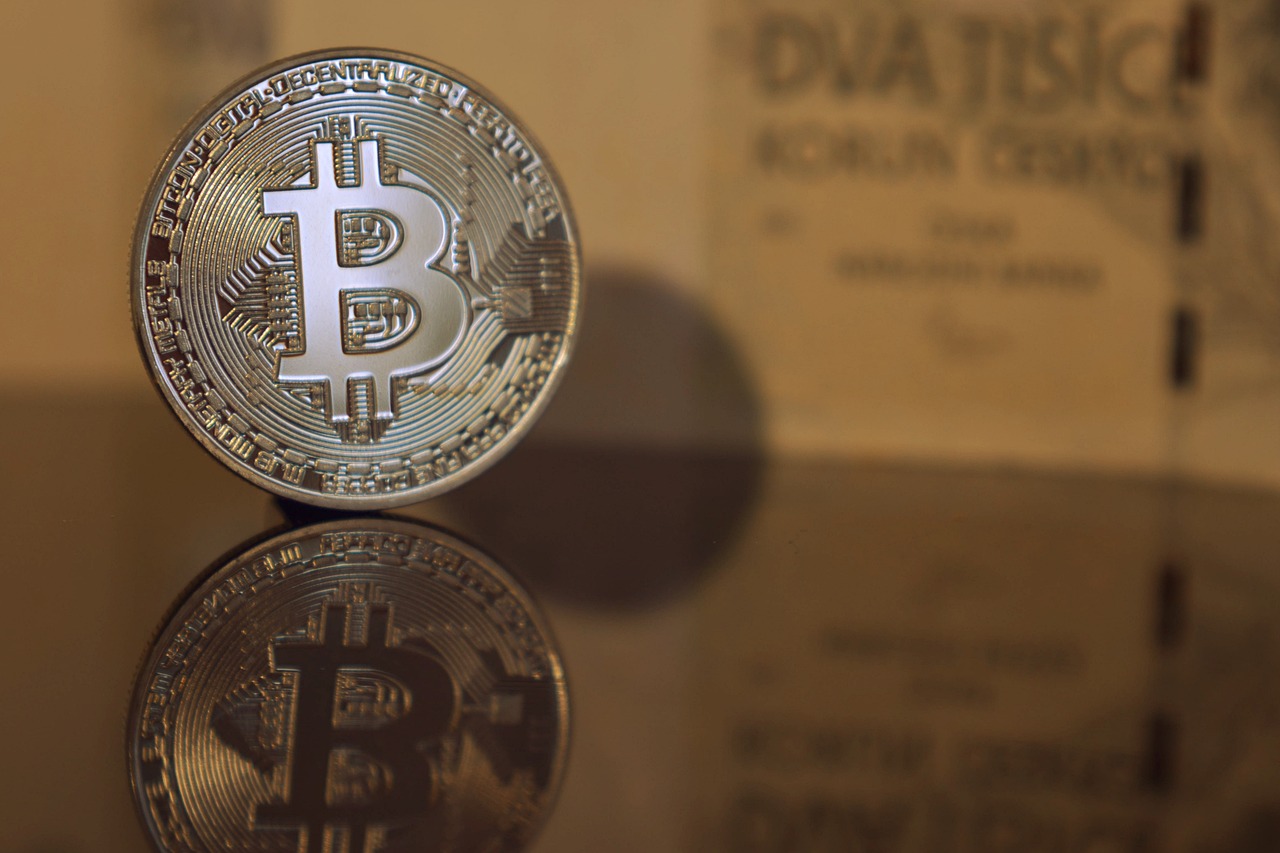
Understanding Exchange Security Risks
In the ever-evolving world of cryptocurrency, understanding the security risks associated with exchanges is crucial for anyone looking to trade or invest. With the rise of digital currencies, exchanges have become prime targets for hackers and fraudsters. This reality leads us to ask: what are the most significant risks involved? First, we need to consider the various threats that can compromise the security of these platforms.
One of the most pressing concerns is hacking. Cybercriminals continuously devise new methods to breach exchange security, often exploiting vulnerabilities in software or human error. For instance, in 2014, the infamous Mt. Gox hack resulted in the loss of over 850,000 Bitcoins, shaking the entire industry and raising questions about the safety of digital assets. Hacking incidents can lead to significant financial losses, not only for the exchange but also for its users, making it imperative to choose exchanges with robust security measures.
Another risk is fraud. Scammers often create fake exchanges to lure unsuspecting users into depositing their funds, only to disappear with their money. These fraudulent platforms can be hard to identify, especially for inexperienced traders. Therefore, it’s essential to conduct thorough research and look for signs of legitimacy, such as licensing and user reviews before entrusting any exchange with your hard-earned money.
Additionally, exchanges face regulatory challenges. Different countries have varying regulations regarding cryptocurrency trading, and some exchanges may not comply with these laws. This non-compliance can lead to shutdowns or legal issues, jeopardizing user funds. It’s crucial to understand the regulatory landscape of the exchange you choose to use, as this can significantly impact the security of your investments.
Moreover, the lack of transparency in some exchanges can create an environment ripe for exploitation. Users may find it difficult to obtain information about the exchange's security measures or operational practices. A transparent exchange, on the other hand, openly shares its security protocols, audits, and compliance with regulations, instilling confidence in its users.
To sum up, the risks associated with cryptocurrency exchanges are multifaceted and can have severe implications for users. Being aware of these risks is the first step towards protecting yourself and your investments. By conducting due diligence and choosing exchanges with strong security measures, you can significantly reduce your exposure to these threats.

Key Security Features to Look For
When diving into the world of cryptocurrency exchanges, it’s crucial to arm yourself with knowledge about the key security features that can make or break your experience. With countless stories of hacks and breaches floating around, knowing what to look for can help you navigate this digital landscape with confidence. So, what should you keep an eye on? Let’s break it down.
First and foremost, one of the most critical features is Two-Factor Authentication (2FA). This security measure requires users to provide two forms of identification before accessing their accounts, adding an extra layer of protection. Imagine locking your front door and then also putting a deadbolt on it; that’s what 2FA does for your online accounts. It’s a simple step that can significantly reduce the risk of unauthorized access.
There are several methods of two-factor authentication available, each with its pros and cons. Popular options include:
- SMS Codes: A code sent to your mobile phone that you must enter to log in.
- Authenticator Apps: Applications like Google Authenticator generate time-sensitive codes for added security.
- Hardware Tokens: Physical devices that produce a code, offering a highly secure option.
Enabling 2FA is not just a suggestion; it’s a necessity in today's digital age. By requiring a second form of verification, you can dramatically decrease the chances of falling victim to hackers.
Another essential feature is cold storage. This refers to keeping the majority of the exchange's cryptocurrencies in offline wallets, which are not connected to the internet. Think of it as a safety deposit box for your digital assets—secure and out of reach from online threats. Exchanges that utilize cold storage can offer users peace of mind knowing that their funds are protected from potential hacking attempts.
Moreover, it's important to look for exchanges that provide insurance policies for their users. Insurance can act as a safety net in the unfortunate event of a breach or loss of funds. However, not all insurance is created equal, so be sure to investigate what types of coverage are offered and the credibility of the insurance provider. Just like you wouldn’t buy a car without checking the insurance policy, you shouldn’t engage with an exchange without understanding its coverage.
Lastly, consider the exchange's security protocols. Look for features such as regular security audits, encryption methods, and compliance with industry standards. An exchange that prioritizes security will often have a transparent approach, detailing their security measures on their website. If they are vague or dismissive about their security practices, it might be a red flag.
In summary, when evaluating a cryptocurrency exchange, keep an eye out for these key security features: Two-Factor Authentication, Cold Storage solutions, insurance policies, and robust security protocols. These elements can significantly impact your overall safety and trust in the platform, allowing you to trade with confidence.
Q: Why is Two-Factor Authentication important?
A: Two-Factor Authentication adds an extra layer of security by requiring a second form of verification, making it much harder for unauthorized users to access your account.
Q: What is cold storage?
A: Cold storage refers to keeping cryptocurrencies in offline wallets, protecting them from online threats and hacking attempts.
Q: How can I check if an exchange has insurance?
A: Look for information on the exchange's website regarding their insurance policies, including the types of coverage and the credibility of the insurance provider.
Q: What should I do if I suspect my account has been compromised?
A: Immediately change your password, enable Two-Factor Authentication if you haven't already, and contact the exchange's customer support for assistance.

Two-Factor Authentication (2FA)
When it comes to securing your cryptocurrency accounts, is like having a solid lock on your front door, plus a security guard standing watch. This additional layer of security requires users to verify their identity through a secondary method, making it significantly harder for unauthorized individuals to gain access to your account. Think of it this way: even if someone manages to steal your password, without that second verification step, they’re still locked out. This is why enabling 2FA is not just a good idea; it’s essential.
There are several methods of two-factor authentication, and each has its own pros and cons. Here’s a quick breakdown of the most common options:
| Method | Security Level | Convenience |
|---|---|---|
| SMS Codes | Moderate | High |
| Authenticator Apps | High | Moderate |
| Hardware Tokens | Very High | Low |
As you can see, while SMS codes are easy to use, they are also more vulnerable to interception. On the other hand, authenticator apps like Google Authenticator or Authy provide a higher level of security by generating time-sensitive codes directly on your device. For those seeking the utmost security, hardware tokens are a fantastic choice, although they may not be as convenient for everyday use.
Now, you might be wondering, “Why should I bother enabling 2FA?” The answer is simple: it drastically reduces the risk of unauthorized access. In a world where cyber threats are ever-evolving, taking proactive measures to protect your assets is crucial. By enabling 2FA, you’re not just safeguarding your cryptocurrency; you’re also investing in peace of mind.
In summary, two-factor authentication is a critical component of your overall security strategy. Whether you choose SMS codes, authenticator apps, or hardware tokens, the important thing is to take that extra step. Remember, in the realm of digital finance, it’s better to be safe than sorry!
- What is two-factor authentication?
Two-factor authentication (2FA) is a security process that requires two different forms of identification before granting access to an account. - Why should I enable 2FA?
Enabling 2FA adds an extra layer of security, making it much harder for unauthorized users to access your account, even if they have your password. - Which 2FA method is the most secure?
Hardware tokens are generally considered the most secure option, followed by authenticator apps. SMS codes are less secure due to potential interception. - Can I use 2FA on all exchanges?
Most reputable cryptocurrency exchanges offer 2FA as an option, but it’s always best to check the specific exchange’s security features.
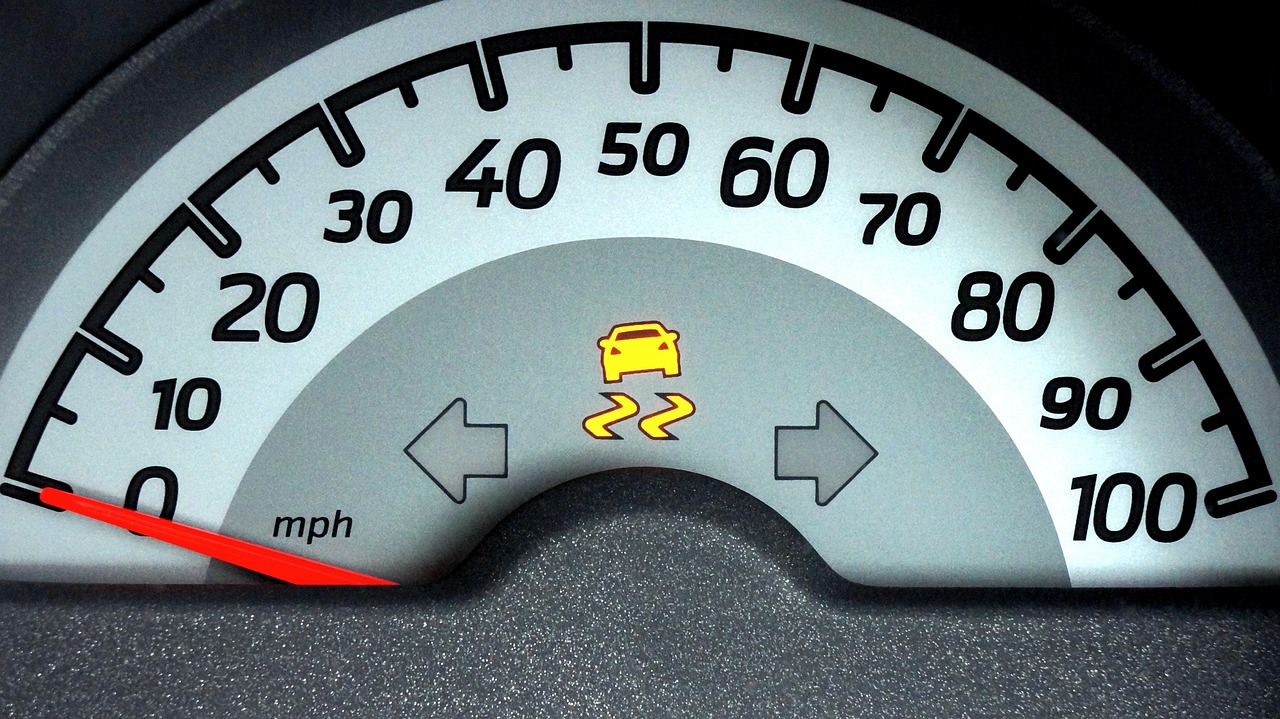
Types of 2FA Methods
Two-factor authentication (2FA) is an essential security measure that adds an extra layer of protection to your accounts. By requiring two forms of verification, it significantly reduces the risk of unauthorized access. There are several methods of 2FA available, each with its own level of security and convenience. Understanding these methods is crucial in choosing the right one for your needs.
One of the most common methods is the use of SMS codes. When you attempt to log in, the exchange sends a one-time code to your registered mobile number. While this method is widely used and easy to implement, it's worth noting that it can be vulnerable to SIM swapping attacks, where a hacker tricks your mobile carrier into transferring your phone number to a new SIM card.
Another popular option is the use of authenticator apps, such as Google Authenticator or Authy. These apps generate time-based one-time passwords (TOTPs) that you must enter along with your password. This method is more secure than SMS because the codes are generated on your device and are not transmitted over the network. However, it requires you to have access to your mobile device when logging in, which could be a drawback if you lose it.
For those seeking the highest level of security, hardware tokens are an excellent choice. These physical devices generate unique codes that you must enter during the login process. Examples include YubiKey and RSA SecurID. Hardware tokens are less susceptible to phishing attacks and can be used even without an internet connection. However, they can be more expensive and may require additional setup steps.
In summary, when evaluating which 2FA method to use, consider the following:
- SMS Codes: Easy to use but vulnerable to attacks.
- Authenticator Apps: More secure, but requires access to your device.
- Hardware Tokens: Highest security but may be costly and less convenient.
Ultimately, the choice of 2FA method should align with your personal security needs and the level of risk you're willing to accept. By implementing a robust 2FA solution, you can significantly enhance your account security and protect your assets from potential threats.
Q1: What is two-factor authentication (2FA)?
A1: Two-factor authentication (2FA) is a security process that requires two forms of identification before granting access to an account. This typically involves something you know (like a password) and something you have (like a mobile device or hardware token).
Q2: Why should I enable 2FA on my accounts?
A2: Enabling 2FA adds an extra layer of security, making it much more difficult for unauthorized users to access your accounts, even if they have your password.
Q3: Can I use multiple 2FA methods for one account?
A3: Many platforms allow users to enable multiple 2FA methods for added security. For example, you can use an authenticator app along with SMS codes for a double layer of protection.
Q4: What should I do if I lose my 2FA device?
A4: Most exchanges provide backup codes when you set up 2FA. Keep these codes secure, as they can be used to access your account if you lose your 2FA device. If you don't have backup codes, you may need to contact customer support for assistance.

Importance of Enabling 2FA
Enabling two-factor authentication (2FA) is one of the most crucial steps you can take to protect your cryptocurrency exchange account. Imagine locking your front door but leaving the window wide open; that’s what it’s like to use a password alone without 2FA. By adding this extra layer of security, you significantly reduce the risk of unauthorized access to your account. In a world where cyber threats are constantly evolving, 2FA acts as a formidable barrier against potential hackers.
When you enable 2FA, you’re not just relying on your password, which can be stolen or guessed. Instead, you require a second piece of information, typically a code sent to your mobile device or generated by an authenticator app. This means that even if someone manages to get hold of your password, they would still need that second factor to access your account. This dual requirement is akin to needing both a key and a fingerprint to unlock a safe; it makes unauthorized access much more difficult.
Furthermore, the importance of enabling 2FA extends beyond just personal security. It also fosters a sense of trust in the platform you’re using. When an exchange emphasizes the necessity of 2FA, it shows that they are committed to safeguarding their users’ assets. This commitment can be a deciding factor for many when choosing which exchange to trust with their hard-earned money.
However, it's essential to choose your 2FA method wisely. Here’s a quick overview of popular 2FA methods:
| 2FA Method | Security Level | Convenience |
|---|---|---|
| SMS Codes | Moderate | High |
| Authenticator Apps | High | Moderate |
| Hardware Tokens | Very High | Low |
While SMS codes are convenient, they can be intercepted or spoofed, making them less secure than other methods. Authenticator apps, like Google Authenticator or Authy, generate time-sensitive codes that are much harder for attackers to exploit. For those who want the highest level of security, hardware tokens provide a physical device that generates codes, ensuring that only you can access your account.
In summary, enabling 2FA is not just a good practice; it’s a necessity in today’s digital age. By taking this simple step, you can significantly enhance the security of your cryptocurrency exchange account, protect your investments, and contribute to a safer trading environment for everyone. Don’t wait until it’s too late—activate 2FA today and fortify your defenses against the ever-present threat of cybercrime.
- What is 2FA? Two-factor authentication (2FA) is a security process that requires two different forms of identification to access an account.
- Why should I use 2FA? 2FA adds an extra layer of security, making it much harder for unauthorized users to gain access to your account.
- Is 2FA foolproof? While 2FA significantly enhances security, no system is 100% foolproof. It should be used in conjunction with other security measures.
- Can I use 2FA on all exchanges? Most reputable exchanges offer 2FA as an option, but it's always good to check before signing up.
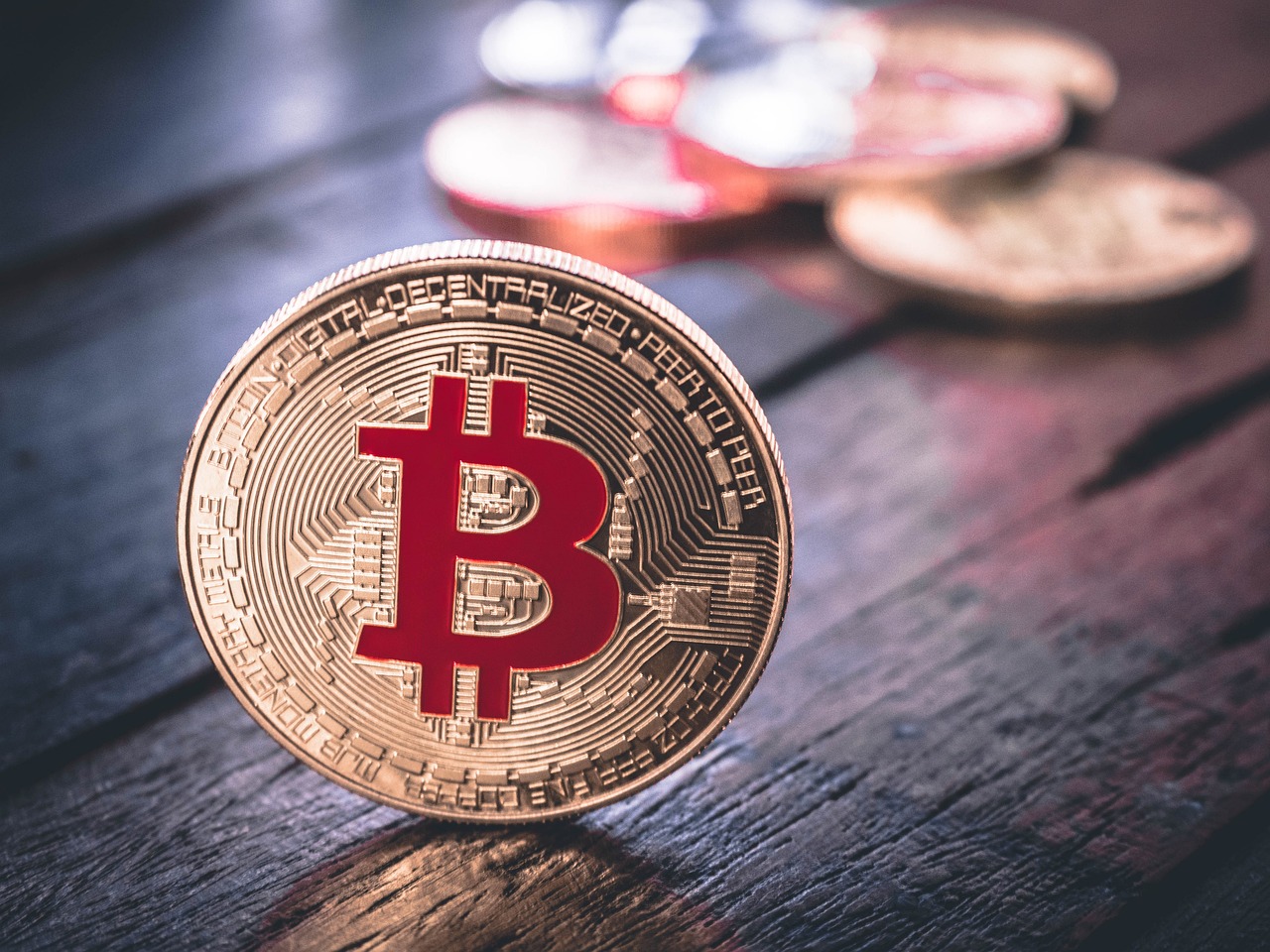
Cold Storage Solutions
When it comes to securing your cryptocurrency investments, are an essential component that no investor should overlook. Cold storage refers to the practice of keeping your digital assets offline, away from the prying eyes of hackers and cybercriminals. Imagine your cryptocurrencies as precious jewels; would you leave them lying around in an unlocked drawer? Of course not! Similarly, cold storage provides a safe haven for your assets, ensuring that they are shielded from online threats.
There are several types of cold storage options available, each offering varying levels of security and convenience. The most common methods include:
- Hardware Wallets: These are physical devices specifically designed to store cryptocurrencies offline. They resemble USB drives and are known for their robust security features, making them a popular choice among serious investors.
- Paper Wallets: A paper wallet is a physical document that contains your private keys and QR codes. While this method is highly secure if generated and stored correctly, it can be risky if the paper is lost or damaged.
- Air-Gapped Computers: This method involves using a computer that has never been connected to the internet. By generating and storing your private keys on such a device, you significantly reduce the risk of online attacks.
Utilizing cold storage solutions can dramatically enhance the security of your cryptocurrency holdings. For instance, hardware wallets are often equipped with features that require physical confirmation for transactions, adding an extra layer of protection. Furthermore, many exchanges that prioritize user security will store the majority of their funds in cold storage, ensuring that even in the event of a hack, the bulk of assets remain safe.
However, it's essential to understand that cold storage is not a one-size-fits-all solution. Each method has its pros and cons. For example, while hardware wallets are highly secure, they can be costly. On the other hand, paper wallets are free but require careful handling and storage to avoid loss. Therefore, it's crucial to assess your individual needs, level of expertise, and the amount of cryptocurrency you hold when choosing a cold storage method.
In summary, cold storage solutions are a vital part of any cryptocurrency security strategy. By keeping your assets offline, you minimize the risk of theft and hacking, allowing you to invest with peace of mind. Remember, in the world of cryptocurrency, being proactive about security can save you from potential losses that could arise from inadequate protection.
Q: What is cold storage in cryptocurrency?
A: Cold storage refers to keeping cryptocurrency assets offline to protect them from online threats. This can be done using hardware wallets, paper wallets, or air-gapped computers.
Q: Why is cold storage important?
A: Cold storage is crucial because it significantly reduces the risk of hacking and theft, ensuring that your digital assets remain safe from cybercriminals.
Q: Can I access my cryptocurrency in cold storage easily?
A: Accessing your cryptocurrency in cold storage can be less convenient than online wallets, as it requires physical access to the storage method. However, the added security often outweighs the inconvenience.
Q: Are hardware wallets worth the investment?
A: Yes, hardware wallets are generally considered worth the investment for serious investors due to their high level of security and ease of use.
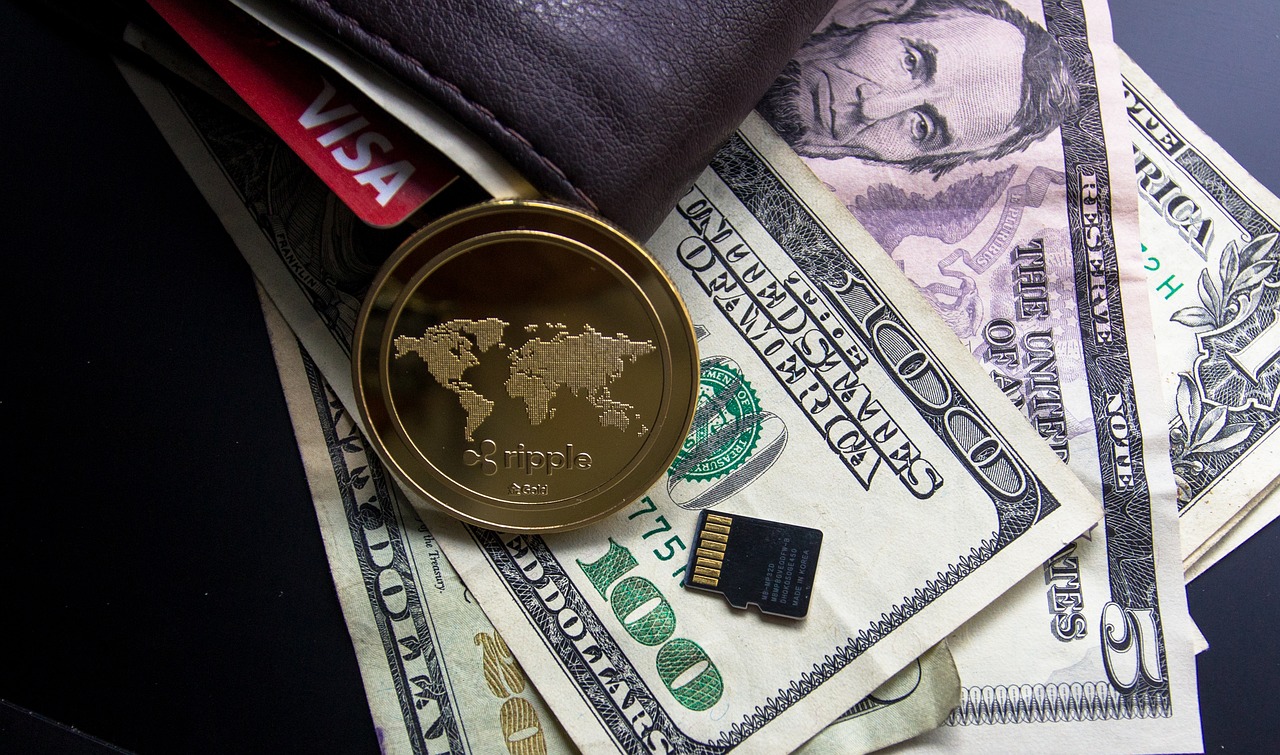
Assessing Regulatory Compliance
When diving into the world of cryptocurrency exchanges, one of the most crucial aspects to evaluate is their regulatory compliance. This involves understanding how well an exchange adheres to the legal frameworks set by governing bodies. Why is this important? Well, compliance not only reflects an exchange's legitimacy but also its commitment to maintaining a secure environment for its users. A compliant exchange is less likely to engage in fraudulent activities and more likely to protect your assets.
To effectively assess an exchange's regulatory compliance, consider the following key points:
- Licensing and Registration: Check if the exchange is licensed and registered with relevant authorities. This can often be found on the exchange's website, usually in the 'About' or 'Compliance' sections. A licensed exchange has undergone scrutiny and meets specific operational standards.
- AML and KYC Policies: Anti-Money Laundering (AML) and Know Your Customer (KYC) policies are not just bureaucratic jargon; they play a vital role in ensuring the integrity of the exchange. These policies help to prevent fraud and illegal activities, ensuring that the platform operates within legal boundaries.
Let’s delve deeper into these two aspects:
Licensing varies by region, and exchanges operating in multiple jurisdictions may have different licenses for each area. For instance, a U.S.-based exchange might be registered with the Financial Crimes Enforcement Network (FinCEN) while a European exchange might comply with the European Union's Anti-Money Laundering Directive. It’s essential to verify that the exchange holds valid licenses pertinent to your location, as this can affect your rights as a consumer.
AML and KYC policies are designed to ensure that exchanges know their customers and monitor transactions for suspicious activity. A robust KYC process typically requires users to provide identification documents, which helps to establish a secure trading environment. If an exchange has lax KYC policies, it may be a red flag, indicating a higher risk of fraud and illegal activities. Always look for exchanges that clearly outline their AML and KYC practices, as this transparency is a good sign of their commitment to security.
In conclusion, assessing regulatory compliance is not just about checking off boxes; it's about understanding the broader implications for your security and trust in the platform. By ensuring that an exchange is properly licensed and adheres to strict AML and KYC protocols, you can significantly enhance your confidence in its operations.
Q: Why is regulatory compliance important for cryptocurrency exchanges?
A: Regulatory compliance ensures that exchanges operate within legal frameworks, reducing the risk of fraud and enhancing user protection.
Q: How can I verify an exchange's licensing?
A: You can typically find licensing information on the exchange's website, often in sections like 'About Us' or 'Compliance'. You may also check with local regulatory bodies.
Q: What are AML and KYC policies?
A: AML (Anti-Money Laundering) and KYC (Know Your Customer) are policies that help prevent fraud and illegal activities by requiring exchanges to verify the identity of their users.
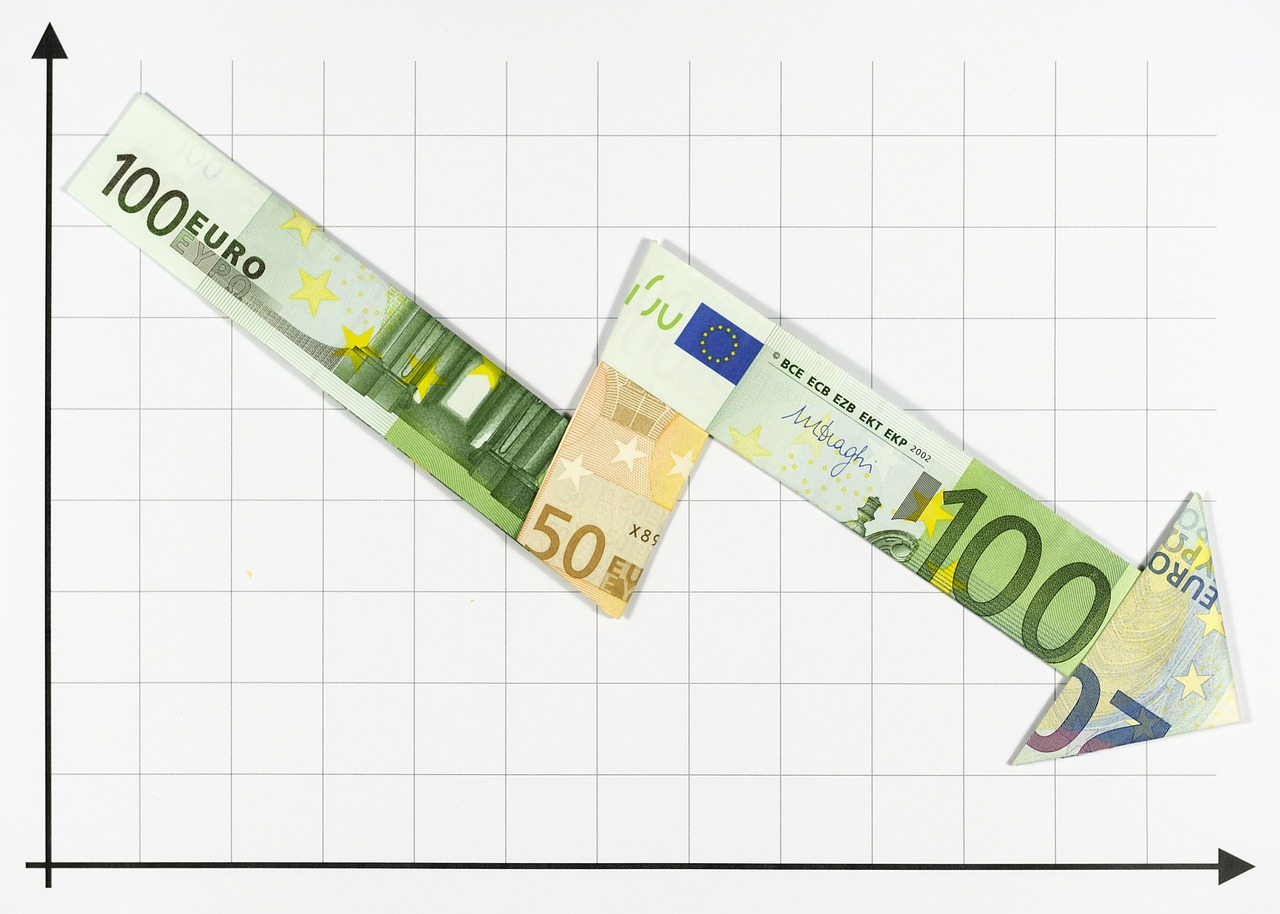
Licensing and Registration
When it comes to evaluating the security of a cryptocurrency exchange, are two of the most critical factors to consider. Just like you wouldn't trust a storefront without a valid business license, the same principle applies to digital platforms handling your hard-earned money. A legitimate exchange should be registered with relevant regulatory authorities, which not only ensures compliance with local laws but also signifies a commitment to operating within a framework designed to protect consumers.
In many jurisdictions, exchanges are required to obtain specific licenses to operate legally. This process often involves rigorous background checks, financial audits, and adherence to strict operational guidelines. For instance, in the United States, exchanges must comply with the Financial Crimes Enforcement Network (FinCEN) regulations and may also be subject to state-level licensing, depending on where they operate. Countries like the UK have their own regulatory bodies, such as the Financial Conduct Authority (FCA), which oversees cryptocurrency exchanges to ensure they meet certain standards.
When evaluating an exchange, you should look for clear indications of its licensing status. This can typically be found on the exchange's website, often in the footer or the 'About Us' section. If the information is not readily available, it could be a red flag. Here’s a quick checklist of what to look for:
- Visible Licensing Information: Ensure that the exchange displays its licensing details prominently.
- Regulatory Authority Links: Check if the exchange provides links to the regulatory authorities it is registered with.
- Compliance with Local Laws: Research whether the exchange complies with the laws of your jurisdiction.
Additionally, it’s worth noting that some exchanges may operate in multiple jurisdictions, which can complicate their licensing status. Always do your homework and verify the exchange's claims through the appropriate regulatory bodies. For example, if an exchange claims to be registered in a specific country, you can usually verify this through the country’s financial regulatory website.
In summary, licensing and registration are not just bureaucratic formalities; they are essential indicators of an exchange's legitimacy and security practices. By ensuring that an exchange is properly licensed, you can significantly reduce the risk of falling victim to fraud or mismanagement of your funds. Remember, a trustworthy exchange will be transparent about its licensing status and eager to provide you with the information you need to feel secure in your trading activities.
- What is the importance of licensing for cryptocurrency exchanges? Licensing ensures that the exchange complies with local laws and regulations, providing a layer of security for users.
- How can I verify an exchange's licensing? You can verify an exchange's licensing by checking the regulatory authority's website in the country where the exchange claims to be registered.
- What should I do if an exchange is not licensed? If an exchange is not licensed, it’s advisable to avoid using it, as it may pose significant risks to your funds and personal information.
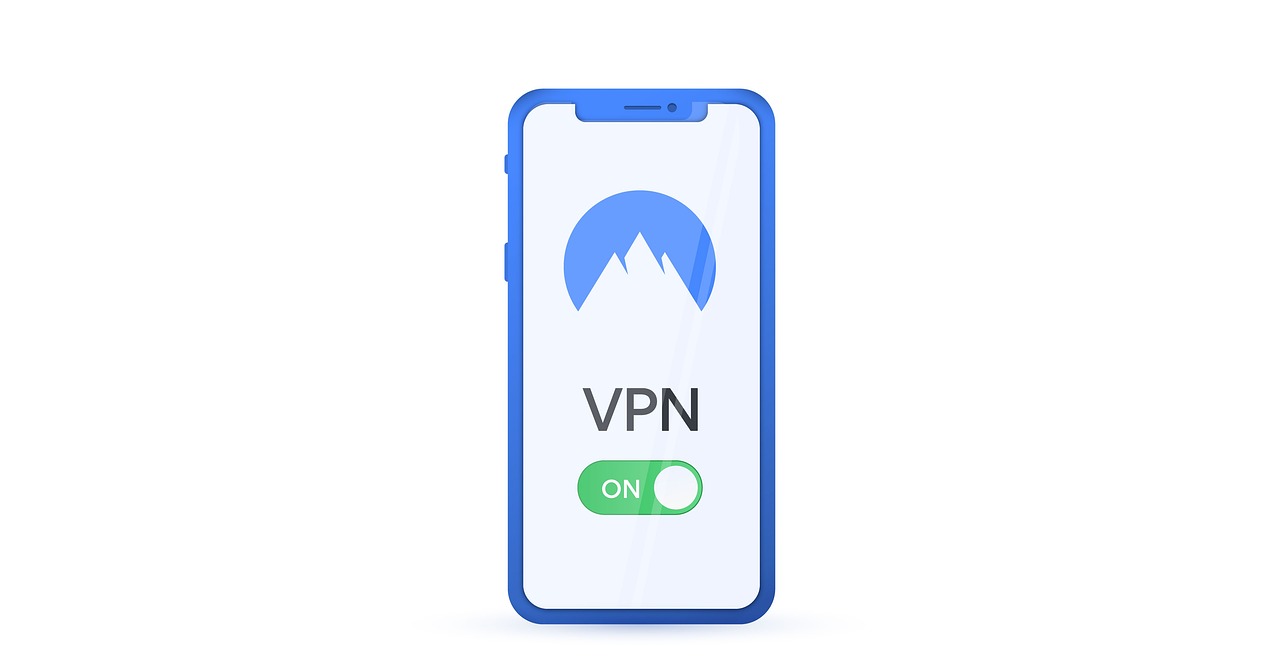
AML and KYC Policies
In the ever-evolving world of cryptocurrency, Anti-Money Laundering (AML) and Know Your Customer (KYC) policies serve as the backbone of security and trust. These measures are not just bureaucratic hurdles; they are essential practices that protect users and the integrity of the exchange. AML policies are designed to detect and prevent any attempts to launder money through the platform, while KYC policies ensure that the exchange verifies the identity of its users. This dual approach helps create a safer trading environment by discouraging illicit activities.
When an exchange implements robust AML and KYC policies, it demonstrates a commitment to maintaining a secure platform. For instance, by requiring users to provide identification documents, such as a passport or driver's license, exchanges can effectively filter out bad actors. This process not only helps in compliance with legal standards but also builds trust among users who want to know their funds are secure.
Here's a quick look at what AML and KYC entail:
- AML Policies: These involve monitoring transactions for suspicious activities, reporting large transactions, and maintaining records of financial activities.
- KYC Policies: This includes verifying user identities, understanding the nature of their transactions, and assessing the risks associated with them.
By adhering to these policies, exchanges can significantly reduce the risk of fraud and financial crimes. Moreover, regulatory bodies worldwide are increasingly scrutinizing crypto exchanges, making it crucial for these platforms to comply with AML and KYC regulations. Failure to do so can lead to hefty fines, operational restrictions, or even closure.
Ultimately, when choosing a cryptocurrency exchange, it's vital to assess their AML and KYC practices. A transparent exchange that openly communicates its policies is likely to be more trustworthy and secure. Remember, if an exchange is willing to take the necessary steps to ensure compliance, it reflects a broader commitment to user safety and security.
| Question | Answer |
|---|---|
| What are AML and KYC policies? | AML (Anti-Money Laundering) and KYC (Know Your Customer) policies are measures implemented by exchanges to prevent fraud and ensure the legitimacy of users. |
| Why are AML and KYC important? | These policies help protect users from fraud and ensure that exchanges comply with legal regulations, thus maintaining a secure trading environment. |
| How do exchanges implement KYC? | Exchanges implement KYC by requiring users to submit identification documents and verifying their identity before allowing transactions. |
| Can I trade without completing KYC? | Most reputable exchanges require KYC compliance to ensure security and regulatory adherence, so trading without it may not be possible. |

Evaluating User Reviews and Reputation
When it comes to choosing a cryptocurrency exchange, user reviews and reputation play a pivotal role in the decision-making process. Think of it as a digital word-of-mouth; just like you wouldn't dine at a restaurant with terrible reviews, you shouldn't trade on an exchange that has a history of security issues or poor customer service. By diving deep into user feedback, you can uncover hidden gems and avoid potential pitfalls that could cost you dearly.
One effective strategy is to check multiple review platforms. Websites like Trustpilot, Reddit, and even specialized crypto forums can provide a wealth of information. Each platform may have different user demographics, leading to varied perspectives on the exchange's performance. For instance, some users might rave about the user interface, while others might highlight security concerns. This diversity of opinion can give you a more rounded view of the exchange's reputation.
In addition to reading reviews, analyzing the overall sentiment is crucial. Look for trends in the feedback. Are users consistently praising the exchange for its security features, or are there recurring complaints about hacks or poor customer support? You might even want to create a simple table to summarize your findings, like so:
| Aspect | Positive Feedback | Negative Feedback |
|---|---|---|
| Security | Strong encryption, 2FA | Past hacks reported |
| Customer Support | Responsive, helpful | Long wait times |
| User Interface | Easy to navigate | Confusing for beginners |
Recognizing red flags in user reviews is equally important. If you notice multiple complaints about security breaches or a lack of transparency from the exchange, it's a sign to proceed with caution. Remember, if something feels off, it probably is. Trust your instincts, and don't hesitate to dig deeper into the exchange's background.
Ultimately, evaluating user reviews and reputation is about gathering as much information as possible to make an informed decision. It’s like piecing together a puzzle; each piece of feedback adds to the bigger picture of the exchange's reliability. So, take your time, do your homework, and remember that a well-informed trader is a successful trader.
Q1: How can I find reliable user reviews for cryptocurrency exchanges?
A1: Look for reviews on multiple platforms such as Trustpilot, Reddit, and specialized crypto forums. This will give you a broader understanding of the exchange's reputation.
Q2: What should I do if I see negative reviews about an exchange?
A2: Analyze the nature of the negative feedback. If there are consistent complaints about security or customer service, it may be wise to consider other options.
Q3: Are all user reviews trustworthy?
A3: Not all reviews are genuine. Be cautious of overly positive or negative reviews that lack detail. Look for reviews that provide specific examples and insights.
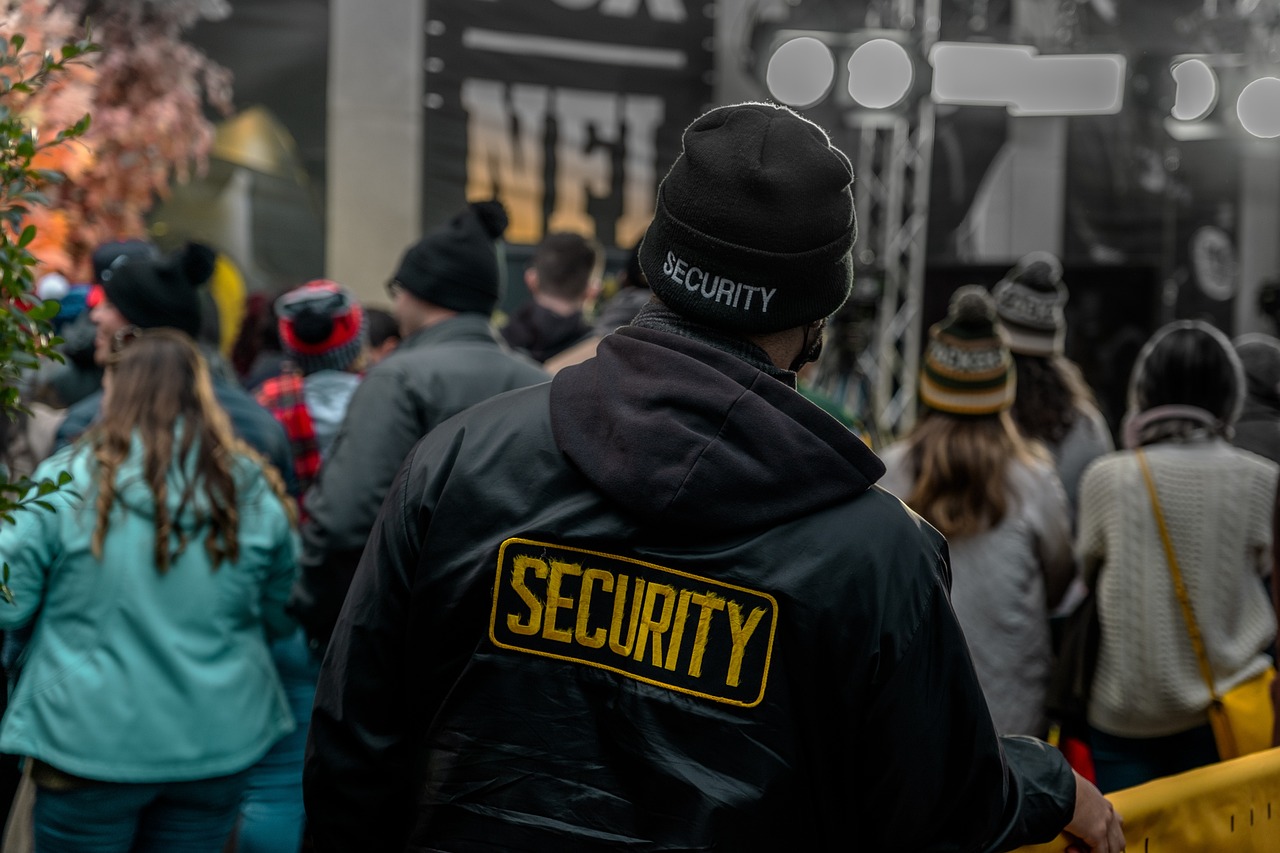
Analyzing User Feedback
When it comes to choosing a cryptocurrency exchange, user feedback can be a goldmine of information. Think of it as the collective voice of the community, sharing experiences, both good and bad. By diving deep into user reviews, you can uncover valuable insights about the exchange's performance, security incidents, and customer support. But how do you go about analyzing this feedback effectively?
First off, it's essential to consider the volume of reviews. An exchange with thousands of reviews is likely to provide a more accurate picture than one with just a handful. Look for patterns in the feedback. Are users consistently praising the platform's user interface? Are there frequent complaints about withdrawal times? These trends can help you gauge the overall reliability of the exchange.
Moreover, don’t just focus on the glowing reviews. While positive feedback can indicate a trustworthy platform, negative reviews can be equally telling. Pay attention to recurring issues mentioned by users, especially those related to security breaches or customer service failures. For instance, if multiple users mention their accounts being compromised or having difficulty reaching customer support, it’s a significant red flag.
Another aspect to consider is the timeliness of the reviews. Cryptocurrency exchanges can evolve rapidly, so recent feedback is more relevant than older reviews. A platform that had security issues last year may have since implemented robust measures to rectify those problems. Therefore, always check the dates of the reviews and prioritize the most recent ones.
To make your analysis more systematic, you might want to categorize the feedback into different aspects such as:
- Security: Look for mentions of hacks, breaches, and the platform's response to these incidents.
- Customer Support: Are users satisfied with the help they receive? Are issues resolved promptly?
- User Experience: Is the platform easy to navigate? Do users find the trading features intuitive?
By organizing the feedback in this way, you can create a clearer picture of what to expect from the exchange. Additionally, consider using tools or websites that aggregate reviews from multiple sources. These platforms often provide an average rating and highlight common pros and cons, making it easier to digest the information.
In conclusion, analyzing user feedback is a crucial step in evaluating the security and reliability of a cryptocurrency exchange. By paying attention to the volume, patterns, and recency of reviews, you can make a more informed decision. Remember, in the world of cryptocurrency, due diligence is your best friend. So, take the time to sift through the feedback and ensure you choose a platform that prioritizes your security and satisfaction.
Q1: Why is user feedback important when evaluating an exchange?
User feedback provides real-world insights into the exchange's performance, security, and customer service, helping potential users make informed decisions.
Q2: How can I identify red flags in user reviews?
Look for recurring complaints about security issues, poor customer service, or withdrawal problems. If multiple users mention the same issues, it could indicate a significant problem.
Q3: Should I trust only positive reviews?
No, while positive reviews can indicate a good experience, negative reviews are equally important. They can reveal potential risks and help you avoid problematic exchanges.
Q4: How recent should the reviews be?
Focus on the most recent reviews, as they provide the best indication of the current state of the exchange. Cryptocurrency exchanges can change rapidly, so up-to-date feedback is crucial.

Identifying Red Flags
When diving into the world of cryptocurrency exchanges, it's crucial to keep your eyes peeled for red flags that may indicate potential security issues or a lack of reliability. Just like a seasoned detective, you need to scrutinize every detail to ensure your hard-earned money is safe. So, what should you be looking for? Here are some key indicators:
First off, if you come across an exchange with a history of security breaches, that should raise an immediate alarm. Repeated incidents of hacking or theft can signal that the exchange is not taking adequate measures to protect its users. Additionally, pay attention to the overall customer service experience. If users consistently report poor support, long response times, or unhelpful assistance, it could indicate that the exchange is not committed to maintaining a secure and user-friendly environment.
Another significant red flag is the presence of unrealistic promises. If an exchange claims to offer guaranteed returns or unusually high interest rates on deposits, it's time to be cautious. These claims often attract those who are eager to make a quick buck but can lead to devastating losses. Moreover, be wary of exchanges that lack transparency regarding their operational practices. If you can't easily find information about their security protocols, regulatory compliance, or management team, it may be a sign that they have something to hide.
Furthermore, check for user feedback on various platforms. If you notice a pattern of negative reviews, especially regarding security incidents or fund retrieval issues, take it seriously. It's like a warning sign flashing in front of you, urging you to reconsider your choices. Always trust your instincts and do thorough research before committing to any exchange.
In summary, by being vigilant and identifying these red flags, you can significantly reduce the risk of falling victim to scams or security breaches. Always remember, when it comes to your investments, it's better to be safe than sorry!
- What should I do if I notice a red flag on an exchange?
Take immediate action by withdrawing your funds and researching alternative exchanges that prioritize security. - How can I verify an exchange's security measures?
Look for information on their website regarding security protocols, insurance policies, and user reviews. - Is it safe to use exchanges with poor customer service?
It's advisable to avoid exchanges with consistently poor customer service, as it may indicate larger operational issues.

Understanding Insurance Policies
When diving into the world of cryptocurrency exchanges, one crucial aspect that often gets overlooked is the insurance policies they offer. Think of insurance as a safety net; it provides a layer of protection for your assets in case something goes awry. In the volatile realm of digital currencies, where hacks and breaches can happen in the blink of an eye, understanding these policies can significantly enhance your peace of mind. So, what should you be looking for?
First and foremost, it’s essential to know the types of insurance coverage that exchanges might provide. While not all exchanges offer insurance, those that do can vary widely in the scope and nature of their coverage. Here’s a quick breakdown of the common types of insurance you might encounter:
| Type of Insurance | Description |
|---|---|
| Crime Insurance | Covers losses due to theft, fraud, or cyber-attacks. |
| Custodial Insurance | Protects assets held in custody against loss or damage. |
| Liability Insurance | Provides coverage against claims of negligence or failure to perform. |
Each of these insurance types plays a unique role in safeguarding your funds. For instance, crime insurance is particularly vital as it directly addresses the risks associated with hacking and theft, which are prevalent in the crypto space. On the other hand, custodial insurance ensures that even if the exchange faces a catastrophic event, your assets are still protected.
However, it's not just about having insurance; the credibility of the insurance provider is equally important. If an exchange claims to have insurance but partners with a questionable insurer, that coverage might not be worth the paper it’s printed on. Therefore, always research the insurance provider's reputation and financial stability. A solid insurance policy should come from a well-regarded company that has a history of honoring claims.
Moreover, understanding the limitations and exclusions of these policies is crucial. Just like any insurance, there are often fine print details that can significantly impact the coverage. For example, some policies may not cover certain types of breaches or may have caps on the amount they will pay out. Therefore, it's wise to read the policy thoroughly and even consult with an expert if you're unsure.
In conclusion, while insurance policies are not a panacea for all the risks associated with cryptocurrency exchanges, they do provide a valuable layer of security. By understanding the types of coverage available, the reputation of insurance providers, and the specific terms of the policies, you can make more informed decisions about where to trade your digital assets. Remember, in the world of crypto, being proactive about your security can save you from potential headaches down the line.
- What is the purpose of insurance policies on cryptocurrency exchanges?
Insurance policies serve to protect users' funds in the event of a breach, theft, or other unforeseen incidents, adding an extra layer of security. - Are all cryptocurrency exchanges insured?
No, not all exchanges offer insurance. It's essential to research and choose platforms that provide adequate coverage. - How can I verify the credibility of an exchange's insurance provider?
Look for reviews, check the provider's financial standing, and see if they have a history of handling claims effectively.

Types of Insurance Coverage
When it comes to safeguarding your investments in the volatile world of cryptocurrency, understanding the offered by exchanges is crucial. Not all insurance policies are created equal, and the type of coverage can significantly impact your overall security assurance. Generally, there are two primary types of insurance that exchanges may provide: crime insurance and custodial insurance.
Crime insurance is designed to protect against losses resulting from criminal activities such as hacking, fraud, or employee theft. This type of coverage is vital for exchanges, as it can potentially reimburse users in the event of a security breach that leads to the loss of funds. However, it's essential to note that the specifics of this coverage can vary widely between exchanges. Some may cover only certain types of losses, while others might have exclusions that could leave users vulnerable.
On the other hand, custodial insurance focuses on the safekeeping of cryptocurrencies held in custody by the exchange. This type of insurance is particularly relevant for exchanges that manage users' funds directly. It provides a layer of protection against losses due to mismanagement or operational errors. However, custodial insurance often comes with its own set of limitations, including caps on coverage amounts and specific conditions that must be met for a claim to be honored.
To help clarify the differences, here’s a brief comparison in the table below:
| Type of Insurance | Coverage Focus | Common Exclusions |
|---|---|---|
| Crime Insurance | Losses from criminal acts (hacking, fraud) | Specific types of fraud, user negligence |
| Custodial Insurance | Protection for user funds held in custody | Operational errors, limits on coverage |
Understanding the intricacies of these insurance types can empower you as a user to make informed decisions about where to trade and hold your assets. It’s not just about having insurance; it’s about knowing what that insurance covers and where it might fall short. Always read the fine print and ask questions if anything is unclear. After all, your financial security is at stake!
1. What is the purpose of insurance coverage for cryptocurrency exchanges?
Insurance coverage serves to protect users' funds in case of security breaches, fraud, or operational errors, providing an additional layer of security.
2. Are all exchanges required to have insurance?
No, not all exchanges are required to have insurance. It varies by jurisdiction and the specific operational model of the exchange.
3. Can I rely solely on insurance for my cryptocurrency investments?
While insurance adds a layer of protection, it should not be your only line of defense. Users should also implement personal security measures and conduct thorough research on exchanges.
4. How can I find out what type of insurance an exchange has?
Most reputable exchanges will disclose their insurance policies on their websites. If not, you can contact their customer support for more information.
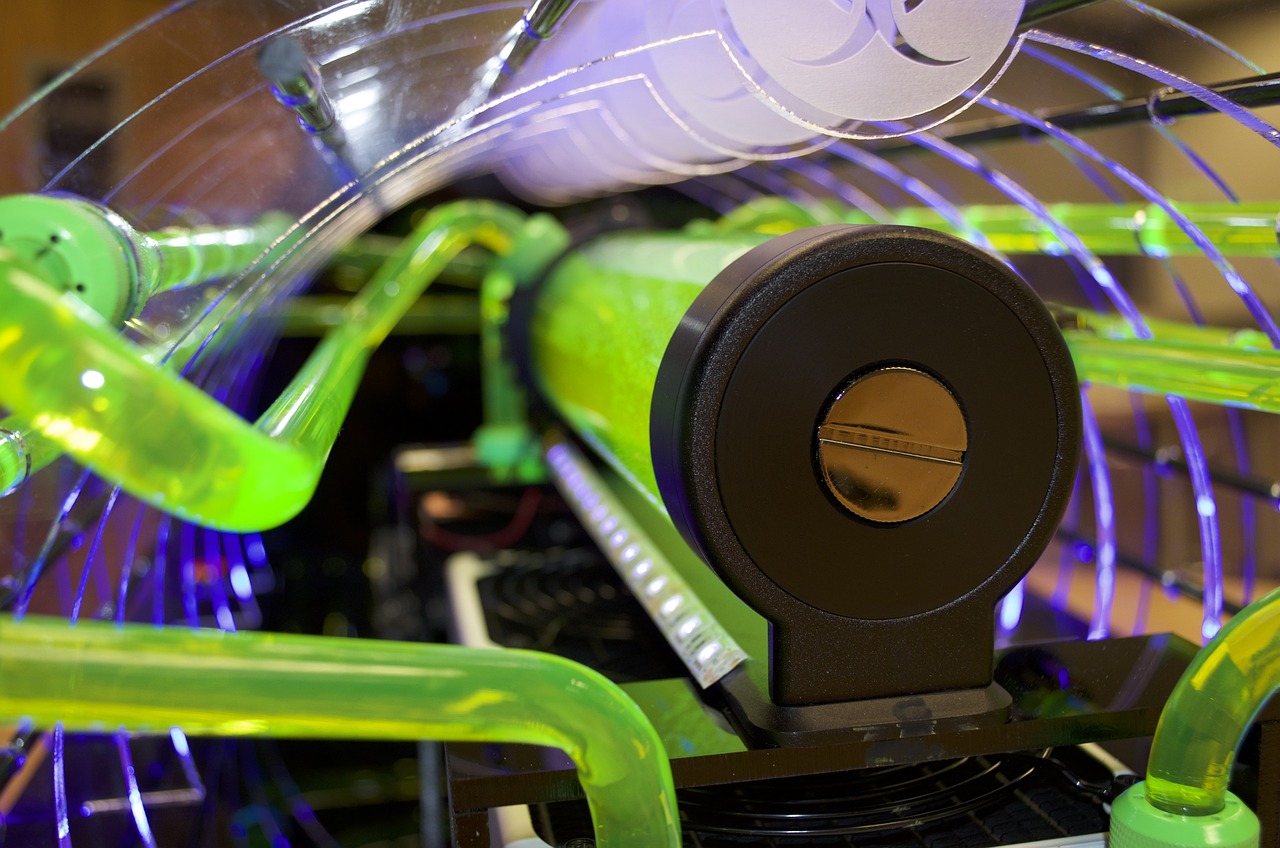
Evaluating Insurance Credibility
When it comes to cryptocurrency exchanges, having an insurance policy is an important safety net for users. However, not all insurance policies are created equal. It's essential to evaluate the credibility of an exchange's insurance provider to ensure that your funds are genuinely protected in the event of unforeseen incidents. But how do you go about this? Let's break it down.
First, start by researching the insurance company itself. Look for reputable insurers that have a proven track record in the financial sector. Established companies with a history of covering similar risks are more likely to provide reliable coverage compared to newer, less-known firms. You can check online reviews, financial ratings, and even regulatory filings to gauge their stability and reliability.
Next, it’s crucial to understand the scope of the insurance coverage. Some exchanges may offer crime insurance that covers losses due to hacking or theft, while others might have custodial insurance that protects user funds held in their wallets. Here’s a quick comparison:
| Type of Insurance | Description |
|---|---|
| Crime Insurance | Covers losses from theft, hacking, and fraud. |
| Custodial Insurance | Protects funds held in custody by the exchange. |
| Liability Insurance | Covers legal liabilities arising from operational errors. |
Moreover, you should also verify the limits of coverage. A policy might sound impressive, but if the coverage limits are low, it may not provide adequate protection for your investments. Always ask the exchange for detailed information on what is covered and the maximum payout they offer.
Lastly, don’t forget to check the claims process. A credible insurance provider should have a straightforward and transparent claims process. Look for user testimonials or reviews that discuss how efficiently claims were handled in past incidents. If an exchange is hesitant to provide this information or if you find complaints about their claims process, it might be a red flag.
In summary, evaluating the credibility of an exchange's insurance involves a comprehensive look at both the insurer and the specific policy details. By doing your homework, you can significantly enhance your peace of mind and protect your investments in the volatile world of cryptocurrency.
- What should I look for in an exchange's insurance policy? Look for reputable insurers, coverage limits, and the types of risks covered.
- How can I verify the insurance provider's credibility? Research their history, check financial ratings, and read user reviews.
- Is insurance enough to protect my funds? While insurance adds a layer of protection, it's also essential to implement personal security measures.
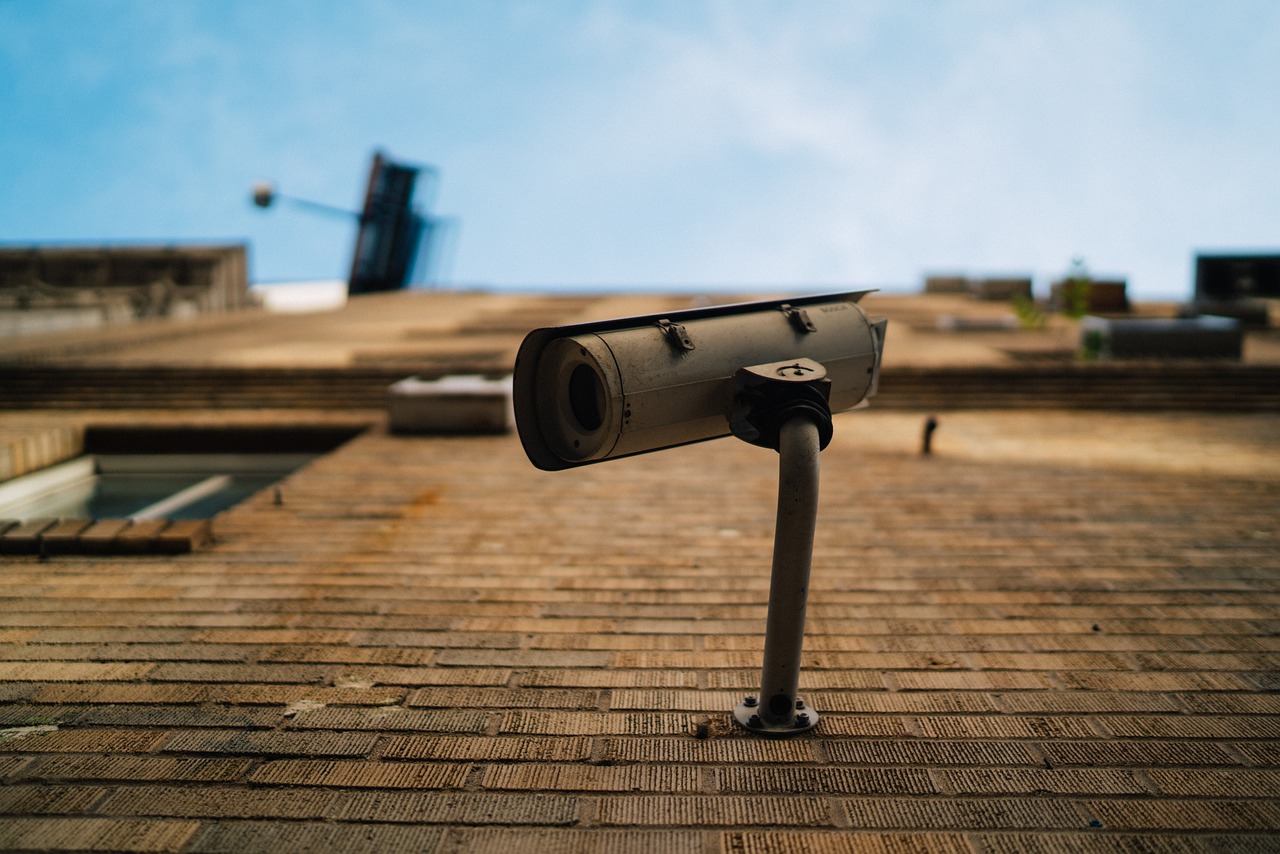
Implementing Personal Security Measures
When it comes to securing your cryptocurrency investments, **personal security measures** are just as crucial as the security features provided by the exchange itself. Think of it this way: even the strongest fortress can be breached if the gates are left wide open. By taking proactive steps, you can significantly enhance your protection against potential threats. One of the most effective ways to start is by creating **strong passwords**. A strong password is not just a random combination of letters and numbers; it should be a unique phrase that is difficult to guess. For instance, instead of using "123456" or "password," consider using a phrase like "MyDogLovesToBark@Night!" which combines upper and lower case letters, numbers, and special characters. This complexity makes it much harder for hackers to crack your password.
Furthermore, it’s vital to use **different passwords** for each of your accounts. Imagine trying to unlock multiple doors with the same key; if one door is compromised, all others are at risk. Using a password manager can help you keep track of these unique passwords without the hassle of remembering each one. Additionally, regularly updating your passwords is a good practice that can further enhance your security. Aim to change your passwords every few months or immediately after any security incident.
Another essential measure is to **regularly monitor your account activity**. This step is often overlooked, but it can be a game-changer. By keeping an eye on your transactions and account changes, you can quickly identify any suspicious activity. Many exchanges offer notifications for account activity, so make sure to enable these alerts. If you notice anything unusual, such as transactions you didn’t authorize, take action immediately by contacting the exchange and securing your account.
In addition to monitoring your accounts, consider implementing **additional security features** like two-factor authentication (2FA). This method adds an extra layer of protection by requiring a second form of verification before granting access to your account. Whether it’s through SMS codes, authenticator apps, or hardware tokens, enabling 2FA can drastically reduce the risk of unauthorized access.
Finally, it’s crucial to stay informed about the latest security threats and trends in the cryptocurrency world. The landscape is ever-evolving, and new vulnerabilities can emerge at any time. Following reputable sources and engaging with communities can help you stay ahead of potential risks. In summary, implementing personal security measures is not just about protecting your investments; it’s about creating a **secure environment** for your digital assets. By taking these steps, you can rest a little easier knowing that you’re doing your part to safeguard your financial future.
- What is two-factor authentication (2FA)?
Two-factor authentication is a security process that requires two different forms of identification before granting access to an account, significantly increasing security.
- Why should I use a password manager?
A password manager helps you create and store complex passwords securely, making it easier to maintain unique passwords for different accounts.
- How often should I change my passwords?
It’s recommended to change your passwords every few months or immediately after any suspicious activity.
- What should I do if I notice suspicious activity in my account?
If you see anything unusual, contact your exchange immediately and take steps to secure your account.
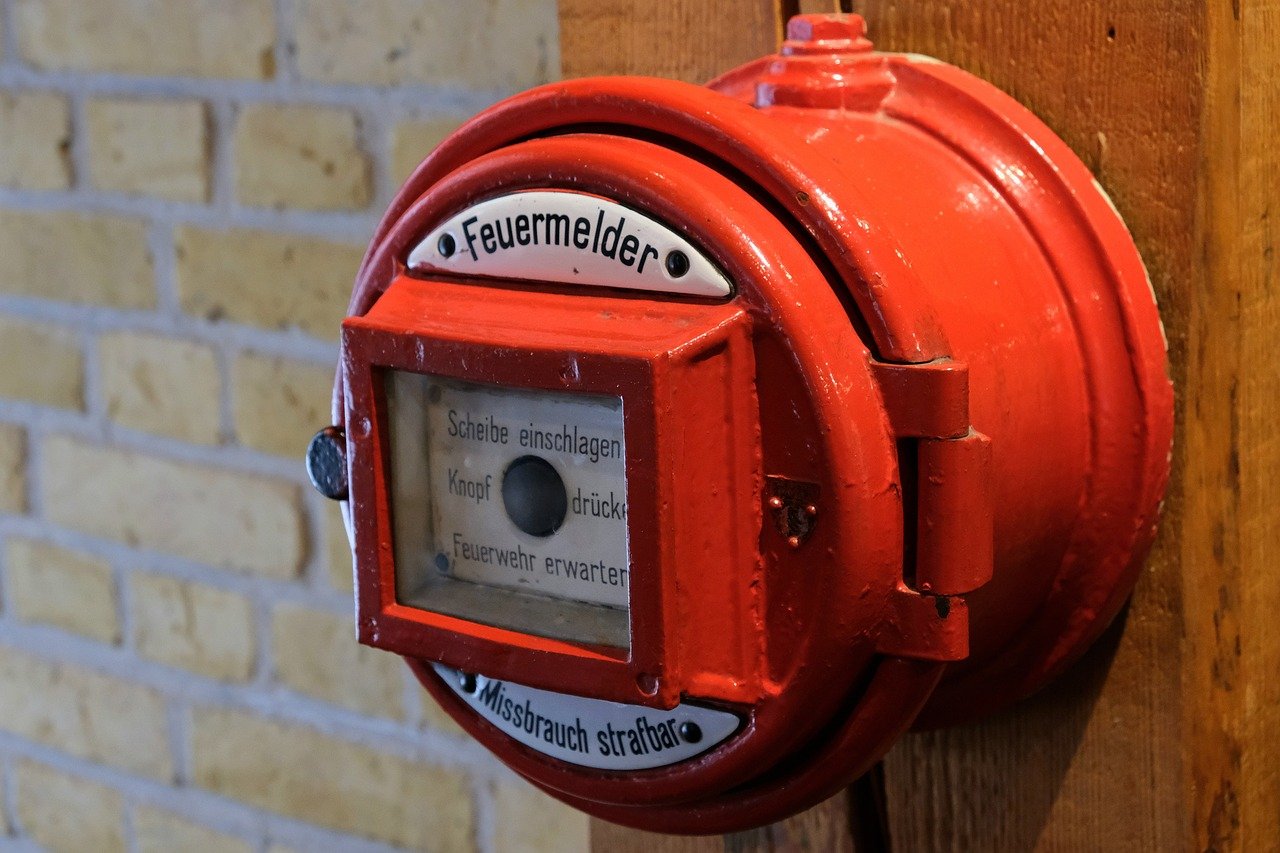
Creating Strong Passwords
Creating strong passwords is like building a fortress around your digital life. In an age where cyber threats lurk at every corner, having a robust password is your first line of defense against unauthorized access. But what makes a password truly strong? It’s not just about using a combination of letters and numbers; it’s about constructing a unique phrase that’s hard for others to guess but easy for you to remember.
First, consider the length of your password. A good rule of thumb is to aim for at least 12 to 16 characters. The longer your password, the harder it is for hackers to crack it. In addition to length, you should incorporate a mix of uppercase letters, lowercase letters, numbers, and special characters. For example, instead of using the simple password “Password123,” you could transform it into something like “P@ssw0rd!2023.” This makes it significantly more difficult for anyone trying to breach your account.
Another essential tip is to avoid using easily accessible personal information. Your name, birthday, or any other details that can be found on your social media profiles should be off-limits. Instead, try using a passphrase—a series of random words strung together that you can easily remember. For instance, “BlueSky!Dance#2023” is not only complex but also memorable. To help you visualize this, here’s a simple table outlining the components of a strong password:
| Component | Example | Importance |
|---|---|---|
| Length | 12-16 characters | Longer passwords are harder to crack. |
| Character Variety | Uppercase, lowercase, numbers, special characters | Diverse characters increase complexity. |
| Avoid Personal Info | Do not use names or birthdays | Reduces predictability. |
| Use Passphrases | Random words combined | Easy to remember, hard to guess. |
Lastly, it’s crucial to remember that no matter how strong your password is, it’s only as secure as your ability to keep it private. Avoid writing it down in easily accessible places and consider using a password manager to store your passwords securely. These tools not only generate strong passwords for you but also help you track them, so you don’t have to remember every single one.
In conclusion, creating strong passwords is an essential step in safeguarding your online accounts. By following these guidelines, you can significantly reduce the risk of unauthorized access and protect your digital assets. Remember, a strong password is not just a combination of characters; it’s a barrier that keeps cyber threats at bay!
- What is the minimum length for a strong password?
Generally, a password should be at least 12 characters long to be considered strong.
- Should I use the same password for multiple accounts?
No, using the same password increases the risk of multiple accounts being compromised if one is breached.
- What is a password manager?
A password manager is a tool that securely stores and manages your passwords, allowing you to create strong, unique passwords for each account without having to remember them all.
- How often should I change my passwords?
It’s recommended to change your passwords every 3 to 6 months, especially for sensitive accounts.

Regular Account Monitoring
Regular account monitoring is a crucial practice for anyone involved in cryptocurrency trading or holding assets on exchanges. Just like you wouldn't leave your front door unlocked, you shouldn't leave your digital assets unmonitored. By consistently checking your account activity, you can quickly spot any suspicious behavior that might indicate unauthorized access or potential fraud. This proactive approach allows you to take immediate action, such as changing your password or contacting customer support, to secure your funds before any significant damage occurs.
To effectively monitor your accounts, consider implementing a routine check-up schedule. This could be daily, weekly, or even monthly, depending on how frequently you engage with the exchange. During these checks, pay close attention to any unfamiliar transactions or changes to your account settings. For instance, if you notice a withdrawal that you didn’t initiate or a change in your email address, it could be a red flag that your account has been compromised.
Additionally, many exchanges offer notifications for account activity. Enabling these alerts can provide you with real-time updates whenever there's a transaction, login attempt, or any significant change to your account. This feature acts as an early warning system, alerting you to potential issues before they escalate.
Here are some key aspects to focus on during your account monitoring:
- Check for unauthorized transactions: Regularly review your transaction history to ensure that all activities are ones you’ve performed.
- Monitor login attempts: Look for any unusual login attempts from unfamiliar IP addresses or locations.
- Review security settings: Ensure that your two-factor authentication (2FA) is enabled and functioning properly.
In conclusion, regular account monitoring is not just a good practice; it’s an essential habit for anyone looking to safeguard their cryptocurrency investments. By staying vigilant and proactive, you can significantly reduce the risk of falling victim to cyber threats and ensure that your digital assets remain secure.
Q1: How often should I monitor my cryptocurrency exchange account?
A1: It's advisable to monitor your account at least once a week. However, if you are actively trading, daily checks may be more appropriate.
Q2: What should I do if I notice suspicious activity in my account?
A2: Immediately change your password, enable two-factor authentication if you haven't already, and contact the exchange's customer support for assistance.
Q3: Can I set up alerts for my account activity?
A3: Yes, most exchanges offer notification settings that allow you to receive alerts for various activities, such as logins and transactions.
Q4: What are the signs that my account may have been hacked?
A4: Signs include unauthorized transactions, changes to your account settings that you didn’t initiate, and unfamiliar login attempts from unknown locations.
Frequently Asked Questions
- What are the main security risks associated with cryptocurrency exchanges?
The primary risks include hacking attempts, fraud, and regulatory challenges. These factors can compromise user funds and personal information if not adequately addressed by the exchange.
- How can I identify if an exchange has strong security features?
Look for essential features such as two-factor authentication (2FA), cold storage for funds, and comprehensive insurance policies. These elements significantly enhance the overall security of the exchange.
- Why is two-factor authentication important?
Two-factor authentication adds an extra layer of security by requiring users to verify their identity through a secondary method, making it much harder for unauthorized individuals to access accounts.
- What is cold storage, and why is it essential?
Cold storage refers to keeping cryptocurrencies in offline wallets, which protects them from online threats. This method is crucial for ensuring the safety of user funds against hacking attempts.
- How can I assess an exchange's regulatory compliance?
Check if the exchange is licensed and registered with relevant authorities. Additionally, review their Anti-Money Laundering (AML) and Know Your Customer (KYC) policies to ensure they adhere to industry standards.
- What should I consider when reading user reviews?
User reviews can provide insights into the exchange's performance and security incidents. Look for repeated complaints or red flags that might indicate potential security issues.
- Are insurance policies important for exchanges?
Yes, insurance policies can protect users' funds in case of a breach or loss. It's essential to evaluate the type and credibility of the insurance coverage offered by the exchange.
- What personal security measures can I implement?
Implement strong, unique passwords for each account and regularly monitor your account activity. These practices can significantly reduce the risk of unauthorized access and enhance your overall security.


















